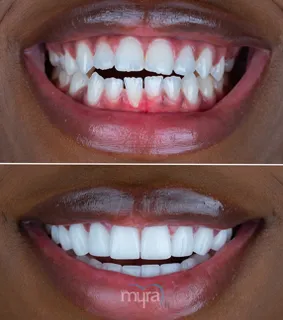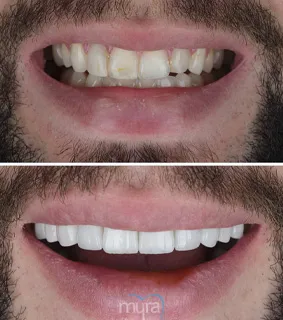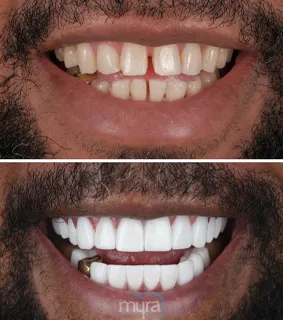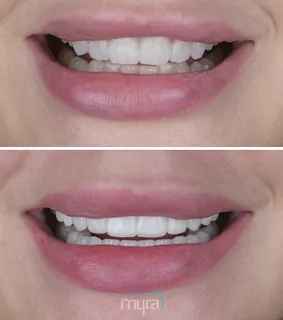A prefabricated abutment is a part used in dental implant treatment to establish a link between the implant fixture and the final prosthetic restoration. A prefabricated abutment is a pre-manufactured and ready-to-use abutment that offers convenience, efficiency, and versatility in dental implant procedures.
Prefabricated abutments come in various designs, sizes, and materials, such as titanium or zirconia. They are standardised to ensure consistent dimensions, angles, and emergence profiles, allowing for predictable clinical outcomes. The abutments are designed to accommodate different implant systems, positions, and restoration types, making them suitable for a wide range of patient needs.
Prefabricated abutments play a crucial role in dental implants by providing a solid foundation for prosthetic restoration and ensuring optimal alignment and contouring. They save time and reduce expenses compared to custom abutments through simplified treatment procedures. Prefabricated abutments offer flexibility in immediate loading protocols and allow for the use of temporary solutions while waiting for the final prosthesis. The easy interchangeability makes it convenient to switch to custom abutments if required.
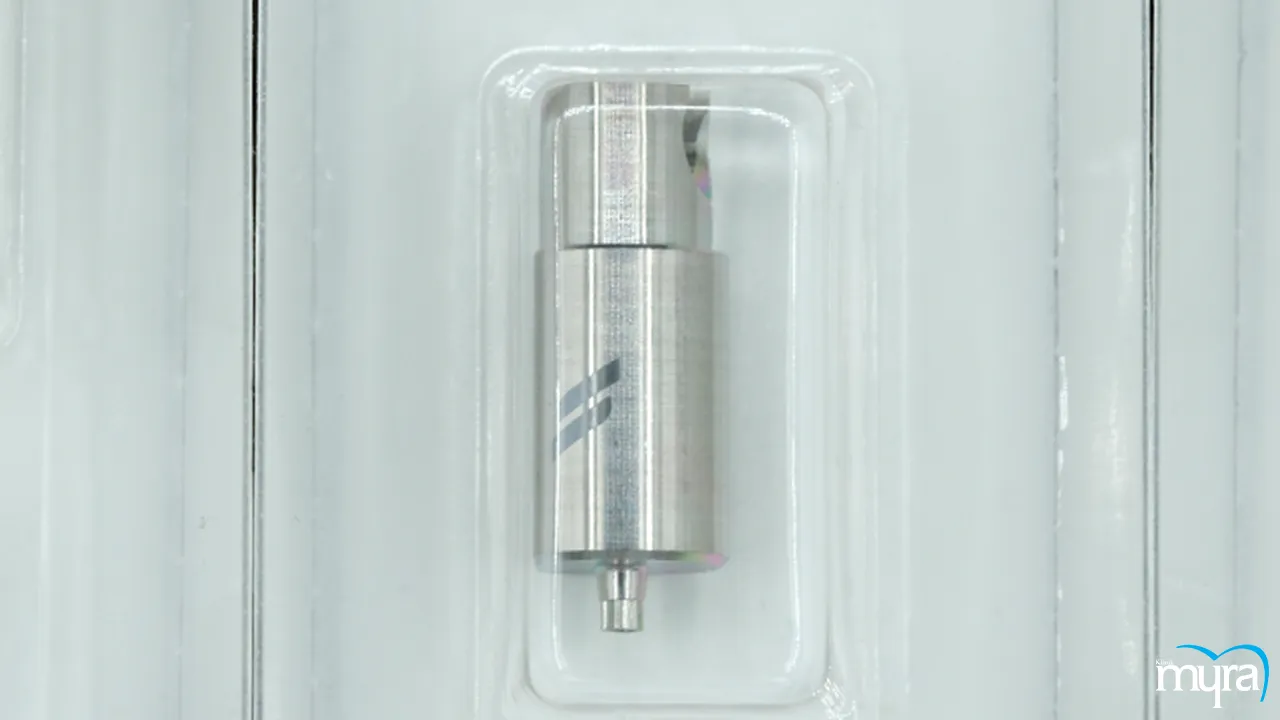
There are several uses of prefabricated abutments and they are applicable in varying situations. Prefabricated abutments are used in single-tooth restorations, multiple-tooth restorations, immediate implant placement, angulated implants, immediate loading protocols, and provisional restorations.
The manufacturing process of prefabricated abutments involves numerous key steps. The procedure includes designing the abutment based on specific requirements, selecting the appropriate biocompatible material, such as titanium or zirconia, and milling or machining the abutment using CAD/CAM technology. It is followed by applying surface treatments to enhance biocompatibility and osseointegration, conducting quality control inspections, and packaging the abutments individually for easy identification and traceability.
Prefabricated abutments offer various advantages in dental implant treatment. They simplify the restorative workflow by eliminating the need for custom design and fabrication, saving time and reducing costs. They provide convenience and ease of use, allowing dental professionals to select and place the appropriate abutment quickly and efficiently. Prefabricated abutments offer versatility in treatment planning, accommodating different clinical situations and restoration types.
Prefabricated abutments have a lot of disadvantages. They have limited customisation options, as they come in predetermined sizes and shapes, which impacts the appearance and functionality of the final restoration. They do not provide the best emergence profile or soft tissue shape, making it challenging to achieve optimal aesthetics, particularly in cases with weak or deficient gingival tissues. The angulation options for prefabricated abutments are limited, posing challenges for prosthetic alignment when the implant fixture is positioned at an unusual angle. Custom abutments are necessary, as prefabricated abutments are sometimes incompatible with complex cases or situations with specific anatomical considerations.
What is a Prefabricated Abutment?
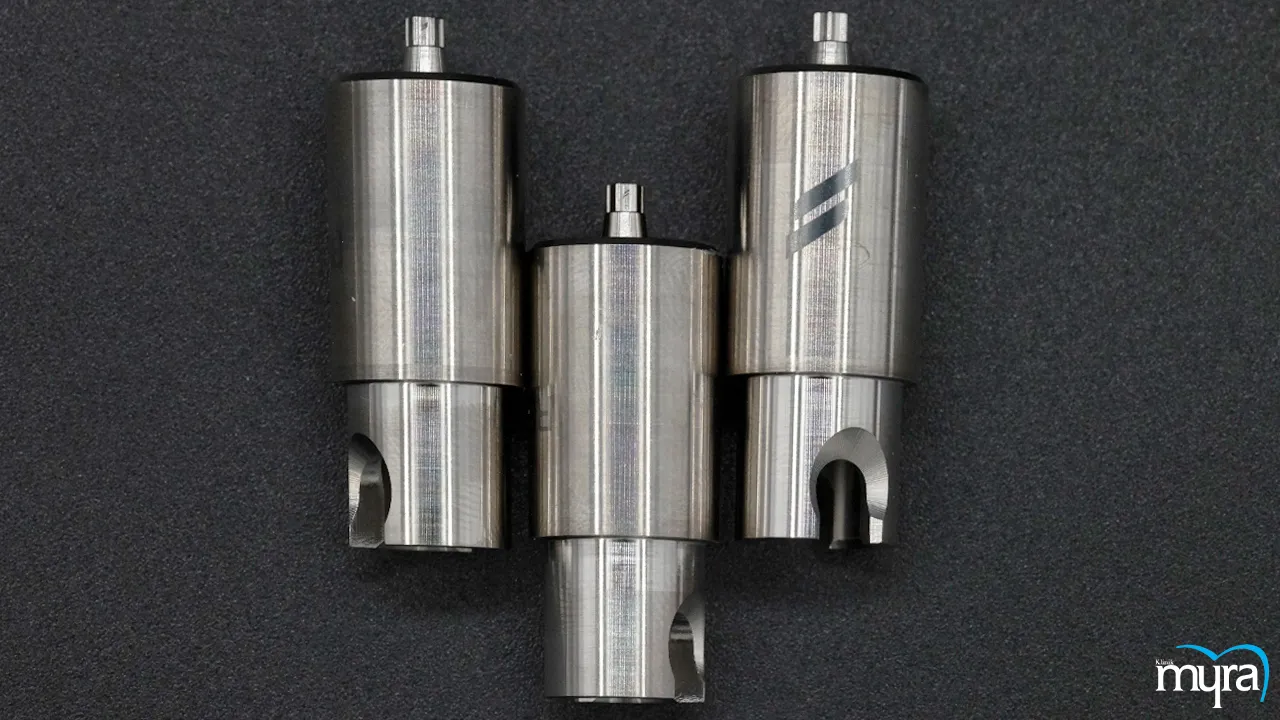
A prefabricated abutment refers to a component used in dental implant restorations. A prefabricated abutment plays a crucial role in connecting the implant fixture, which is surgically placed in the jawbone, to the final dental prosthesis, such as a crown, bridge, or denture.
A prefabricated abutment is a pre-made structure that is manufactured by dental implant companies based on standardised designs. It is typically made of biocompatible materials such as titanium or zirconia, which are known for their strength, durability, and compatibility with oral tissues.
The design of prefabricated abutments takes into account various factors, such as the location and angulation of the implant fixture, the desired emergence profile, and the type of final restoration to be placed on top. They are available in different sizes, shapes, and configurations to accommodate the specific needs of each patient and the treatment plan.
How does Prefabricated Abutment differ from a regular Abutment?
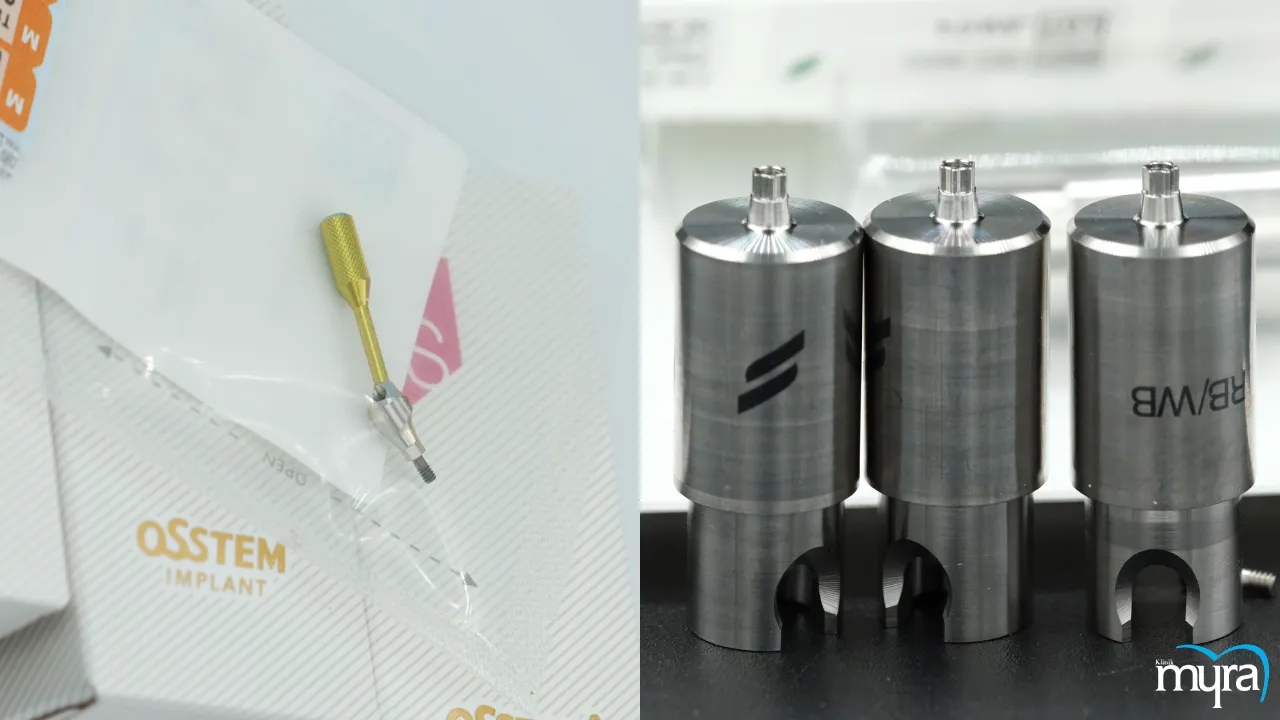
An abutment is a component used in dental implantology that connects the implant fixture to the prosthesis, including a crown or denture. An abutment serves as a connector and provides stability and support for prosthetic restoration. It is typically fabricated using two main methods, which are prefabricated abutments and regular or custom abutments.
A prefabricated abutment, known as a stock abutment, is a pre-manufactured abutment that comes in various shapes and sizes. Prefabricated abutments are designed to fit a range of implant systems and are selected from a catalogue of standard options provided by implant manufacturers. It is a type of abutment that is mass-produced and readily available, which makes them more cost-effective and time-efficient compared to custom abutments.
Prefabricated abutments are manufactured with precise dimensions and standardised features, ensuring a predictable fit with the implant fixture. They are used in straightforward cases where the implant angulation and soft tissue contours are favourable, allowing for a good aesthetic outcome.
A regular or custom abutment is specifically designed and fabricated to match the unique anatomy of the patient's implant site. It is created by a dental laboratory technician based on the specific requirements provided by the dentist or implant surgeon.
Custom abutments offer a higher level of customisation, allowing for precise adaptation to the implant angulation, emergence profile, and soft tissue contours. They are fabricated using materials such as titanium or zirconia and are created using computer-aided design and computer-aided manufacturing (CAD/CAM) technology, which ensures accurate fit and optimal aesthetics.
How does Prefabricated Abutment work?
A prefabricated abutment works by providing a secure and functional connection between a dental implant fixture and the final dental prosthesis. A prefabricated abutment is made to precise measurements and specifications, assuring alignment and compatibility with the implant fixture. The uniform design makes incorporation into the overall dental implant restoration procedure simpler and more effective.
A prefabricated abutment is connected to the implant fixture using a screw or cementation procedure after a dental implant has been surgically implanted in the jawbone. The final dental prosthesis, such as a crown, bridge, or denture, is supported by the link, which serves as a secure foundation. The abutment acts as a link between the implant fixture and the visible area of the restoration to ensure correct support, alignment, and functionality.
A prefabricated abutment's role is crucial in achieving optimal results in dental implant restorations. It provides stability and retention for the final prosthesis, allowing for natural chewing and speaking functions. The abutment's design ensures a proper emergence profile, which refers to the contour and shape of the gum tissue around the implant for aesthetic purposes.
The effectiveness of prefabricated abutments is supported by clinical studies and evidence. Research has shown that prefabricated abutments offer reliable and predictable outcomes in terms of implant success rates, restoration longevity, and patient satisfaction. Studies have demonstrated that prefabricated abutments exhibit good marginal fit, which is essential for minimising bacterial leakage and preventing peri-implant complications. They have been found to provide excellent aesthetic results, closely resembling natural teeth.
Prefabricated abutments have been shown to streamline the restorative process. The standardised design allows for efficient selection and placement, reducing chairside time and simplifying the workflow for dentists and prosthodontists. The availability of various prefabricated abutment options caters to different implant positions, angulations, and restorative needs, providing flexibility and customisation within the standardised framework.
What is the primary use of Prefabricated Abutment?
The primary use of prefabricated abutment is in dental implant operations. An abutment is a part that acts as a connector of the implant fixture, which is inserted surgically into the jawbone, the prosthetic crown or denture. A prefabricated abutment serves as a connection between the implant and the replacement tooth or teeth. A prefabricated abutment is made to be uniform in size and shape, so it works with different kinds of implant systems. The biocompatible materials titanium and zirconia, which are frequently used in dental implants, are typically employed to make an abutment.
Who Should Consider Using Prefabricated Abutments?
The patients who should consider using prefabricated abutments are listed below.
- Patients with a Single Lost Tooth: Prefabricated abutments are frequently employed in situations when a single tooth is absent and needs to be replaced with a dental implant. They offer a practical and effective method of regaining the missing tooth's original form and function.
- Patients with Multiple Missing Teeth: Implant-supported bridges or implant-supported partial dentures are supported by prefabricated abutments when several neighbouring teeth are missing. They act as secure anchors for prosthetic repair, enhancing chewing effectiveness and appearance.
- Patients with Appropriate Bone and Soft Tissue Support: Patients with appropriate bone volume and healthy soft tissues surrounding the implant site are eligible for prefabricated abutments. It guarantees the abutment and the finished restoration of the correct support and stability.
- Patients Seeking Convenience and Time Savings: Prefabricated abutments offer a more streamlined healing procedure compared to custom abutments. They don't require specialised manufacturing or additional laboratory work because they are easily accessible. It is useful for people who desire a quicker and more effective method of receiving dental implants.
- Patients with Budget Considerations: Prefabricated abutments have a lower cost compared to custom abutments. They are a suitable option for patients who want to achieve a successful and functional implant restoration while considering budget constraints.
What Situations can Prefabricated Abutments be used?
The situations in which Prefabricated Abutments are used are listed below.
- Single-Tooth Restorations: Prefabricated abutments are commonly used in single-tooth restorations, where a dental implant is placed to replace a missing tooth. The abutments are available in different designs and materials to accommodate various clinical situations. They provide a predictable and efficient solution for creating a natural-looking and functional dental crown.
- Multiple-Tooth Restorations: Prefabricated abutments are used to support a dental bridge in cases where multiple adjacent teeth are missing. The abutments allow for the fabrication of a stable and aesthetically pleasing bridge without the need for custom-made abutments. The prefabricated design simplifies the treatment process and reduces chair time for the patient.
- Immediate Implant Placement: Prefabricated abutments are used to support the temporary crown or bridge when a tooth is extracted, and an implant is immediately placed in the extraction socket. The abutments are designed to facilitate the immediate restoration of the implant site, providing functional and aesthetic benefits while the final restoration is being prepared.
- Angulated or Tilted Implants: Prefabricated angled abutments are utilised in cases where the dental implant is placed at an angle or tilted due to anatomical limitations or bone resorption. The abutments come in various angulations to match the implant's position, allowing for proper alignment of the final restoration without the need for extensive customisation.
- Immediate Loading Protocols: Prefabricated abutments are often employed in immediate loading protocols, where a dental implant is loaded with a temporary restoration immediately after placement. The abutments are designed to facilitate the fabrication and secure placement of temporary crowns or bridges, enabling the patient to leave with a functional smile on the same day as the implant surgery.
- Provisional Restorations: Prefabricated abutments are used to create provisional restorations during the implant treatment process. The temporary restorations serve as placeholders while the final restoration is being fabricated. Prefabricated abutments simplify the provisionalisation process, allowing for faster and more efficient fabrication and placement of temporary crowns or bridges.
What is the Role of Prefabricated Abutments in Dental Implants?
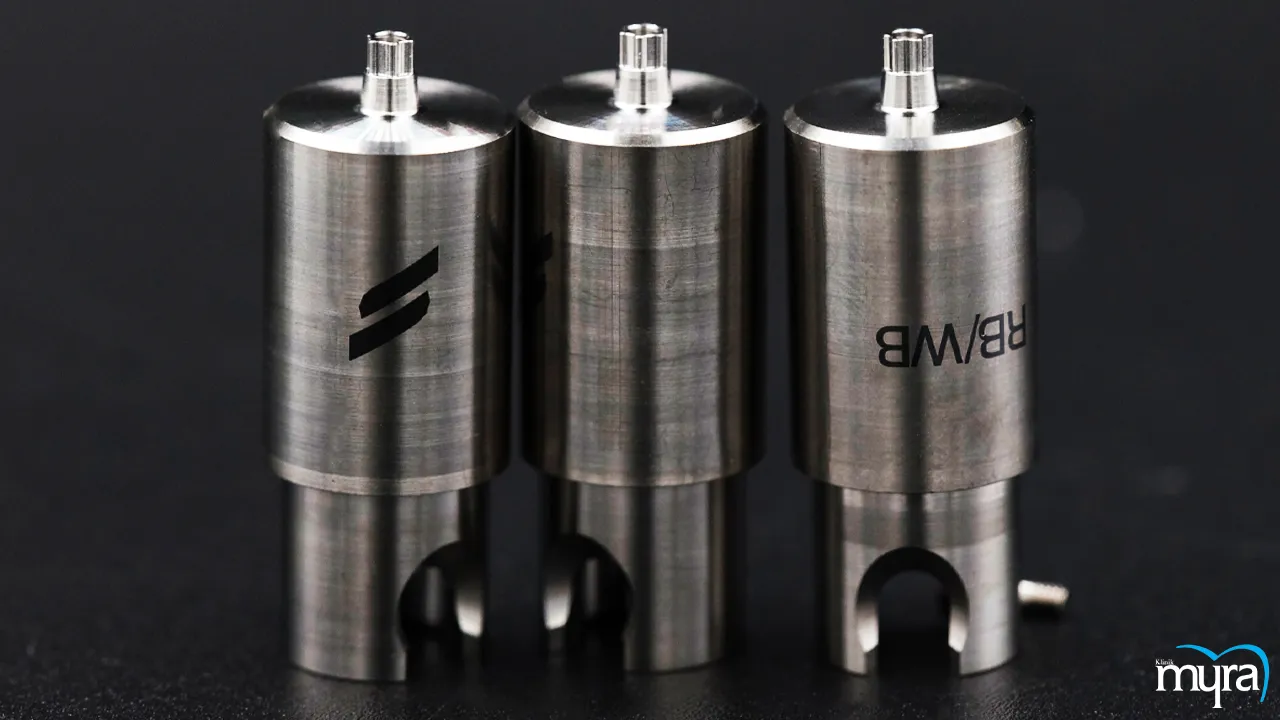
There are a lot of rules that prefabricated abutments partake in dental implants. Prefabricated abutments provide a solid foundation for prosthetic restoration. Prefabricated abutments are expertly crafted to guarantee optimal alignment, emergence profile, and contouring, enabling the development of restorations that seem to fit naturally. The abutments serve as the final prothesis’ support structures, giving them the solidity and toughness they need to endure the stresses of biting and chewing.
Prefabricated abutments make the treatment procedure easier by cutting down on the amount of time needed at the chairside for personalisation. Prefabricated abutments are chosen depending on the patient's anatomical considerations, implant position, and restoration type, as opposed to custom abutments, which are uniquely created and made. It saves time and lowers expenses such as lab fees and the requirement for further appointments.
Prefabricated abutments give the restorative process flexibility. They are employed in immediate loading protocols, in which the last restoration is put in right away following implant surgery. Patients who want a rapid improvement in their appearance or who have particular functional requirements benefit the most from the abutments. Prefabricated abutments supply prosthetics more quickly while achieving excellent clinical results.
Prefabricated abutments are utilised as a temporary fix in situations when the final prosthesis is not immediately accessible. The interim abutments promote the healing process and preserve soft tissue shapes while waiting for the final restoration. The prefabricated abutments are easily swapped out for a custom one if necessary once the finished prosthesis is complete.
How important is Prefabricated Abutment in dentistry?
A prefabricated abutment is highly important in dentistry due to its efficiency. Prefabricated abutment in dentistry plays a vital participation in decreasing the cost of dental treatment because patients do not have to pay extra for a personalised abutment, which requires a lot of processes, including laboratory work. The cost becomes less because prefabricated abutments are readily available and do not need to be created by professionals just for one patient. It means that dentists just have to pick which one is the most suitable.
Prefabricated abutments lessen the number of clinic visits. They are made of very durable materials and are stable, which means that they are reliable and do not need frequent dentist intervention.
How are Prefabricated Abutments used in Dental Implants?
Prefabricated abutments are prepared with a conelike shape that facilitates a tight and stable link to the dental implant fixture. The conical geometry allows for precise alignment and ensures a secure fit between the abutment and the implant. The shape promotes solidity and prevents rotational or lateral movement of the abutment.
The conical design contributes to the biomechanical integrity of the implant system. The conical abutment helps minimise stress and strain on the implant components, promoting long-term durability by distributing accusalocclusal forces evenly along the implant fixture and the surrounding bone.
The abutment is generally attached to the implant fixture using a screw mechanism. A screw channel or hole is present on the implant fixture, allowing for the protected insertion of the abutment screw. The screw is tightened to a predetermined torque, ensuring a sturdy link between the abutment and the implant. The direct screw attachment provides added resilience and solidity to the implant restoration, enabling it to withstand the forces of chewing and biting.
How might Prefabricated Abutments influence Dental Implant treatment?
Prefabricated abutments have a significant influence on dental implant treatment, and their impact is observed in terms of treatment success, efficiency, and potential side effects.
Prefabricated abutments have been shown in studies to help dental implant treatments succeed. A systematic review and meta-analysis that examined multiple trials and was published in the Journal of Dental Research in 2017 indicated no appreciable differences in implant survival rates between prefabricated and customised abutments. It shows that prefabricated abutments produce equivalent clinical results in terms of implant success.
The final prosthesis is supported by prefabricated abutments, which provide perfect alignment, emergence profile, and contouring. The standardised construction makes results predictable and aids in preserving the ideal soft tissue architecture around the implant site, which is essential for long-term stability and appearance.
Prefabricated abutments are readily available and are selected based on the patient's specific needs compared to custom abutments, which require additional time for design and fabrication. It reduces chairside time, laboratory costs, and treatment duration. Prefabricated abutments influence dental implant treatment by improving treatment efficiency by simplifying the restorative workflow.
Prefabricated abutments have many benefits, but they come with negative drawbacks and side effects. The emerging profile of the abutment is one frequent problem. The natural shapes of the soft tissues sometimes do not properly matched by prefabricated abutments, making it difficult to achieve the best aesthetic results, particularly in situations where the gingival tissues are thin or lacking. It necessitates additional soft tissue grafting surgeries or damage gingival aesthetics.
Problems including screw loosening, abutment dislodgement, or even implant failure result from poor seating or insufficient tightness of the abutment screw. Dental professionals must adhere to the right procedures and torque recommendations while placing abutments to reduce the likelihood of such issues.
How Long Does It Take to Complete the Prefabricated Abutments Procedure?
The prefabricated abutment placement and crown affixing procedures are often finished in a short amount of time, usually one to two hours. It is the step of the operation that is frequently carried out during a different session after the initial implantation of the dental implant and a healing time.
The prefabricated abutment is attached to the implant fixture during the appointment, and the dentist removes the healing cap or interim restoration from the implant. Dental cement or other adhesive procedures are used to secure the crown or bridge to the abutment once it has been placed. Patients must anticipate that the average time becomes shorter or longer depending on the complexity of the case, the number of teeth involved, and the individual patient’s circumstances.
What are the Advantages of Prefabricated Abutments?
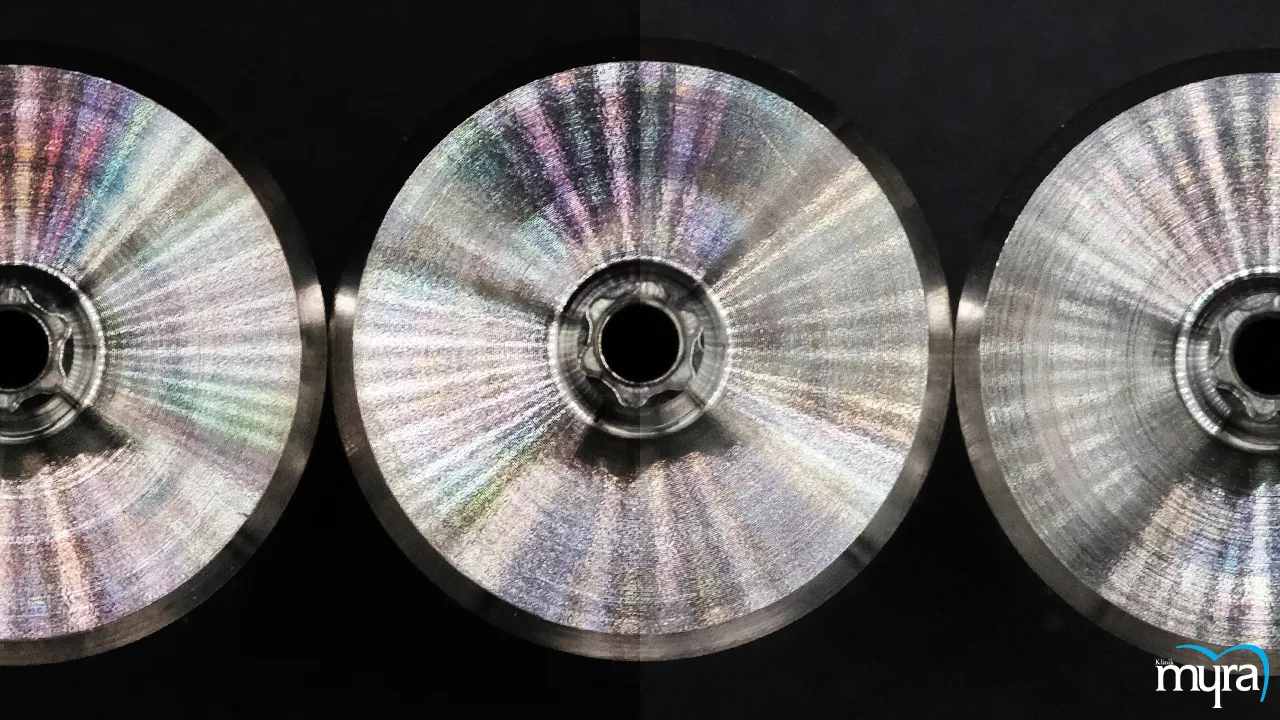
The advantages of prefabricated abutments are listed below.
- Time and Cost Efficiency: Prefabricated abutments are found easily and don't need custom construction, which saves time and money. They do away with the requirement for laboratory work and the associated waiting period for the creation of custom abutments.
- Standardised Fit: Prefabricated abutments are made to have a consistent size and shape, which enables them to fit a variety of implant systems. It guarantees a precise fit between the implant fixture and the abutment, lowering the risk of problems and extending the life of the restoration.
- Ease of Use: Prefabricated abutments are simpler to employ for dental professionals than custom abutments. They already have pre-designed emergence profiles, which makes it easier to build a replacement tooth or teeth that look and feel natural.
- Predictable Aesthetics: Prefabricated abutments are made to offer the best emergence profiles and produce aesthetically pleasing soft tissue contours. It aids in providing the patient with predictable and appealing aesthetic results.
- Biocompatibility: Prefabricated abutments are typically made of biocompatible materials, such as titanium or zirconia. The materials have a long-standing record of safety and compatibility with the human body, minimising the risk of adverse reactions or complications.
- Immediate Availability: Prefabricated abutments are utilised in immediate or early loading protocols when the restoration is put in place soon after the implant has been placed because they are easily accessible. It allows for faster treatment completion and improved patient satisfaction.
- Versatility: Prefabricated abutments come in a range of designs and angulations to suit diverse clinical circumstances. Dental professionals choose the best abutment for each patient's requirements due to their flexibility.
What is the Effect of Prefabricated Abutments on Aesthetic Results?
The use of prefabricated abutments affects improving the appearance of dental implant treatment outcomes. Prefabricated abutments are made with consideration for the emergence profiles and anatomical curves, which nearly resemble genuine teeth. The focus on detail aids in producing the best aesthetic results for the completed restoration.
Prefabricated abutments are available in a variety of forms and curves to accommodate diverse clinical scenarios. These abutments were created using anatomical considerations to imitate the profiles of natural tooth emergence. The ideal soft tissue shapes, which are necessary for a natural-looking aesthetic, are achieved with the help of careful selection and customisation of prefabricated abutments.
Abutments that are prefabricated are found in a variety of colours to complement the neighbouring natural teeth. The ultimate appearance of dental restoration is affected by the colour of the abutment, particularly for restorations made of translucent or metal-free materials, such as all-ceramic or zirconia crowns. The cosmetic result is improved by selecting an abutment colour that closely resembles the patient's natural dentition.
What Are the Risks of Prefabricated Abutments?
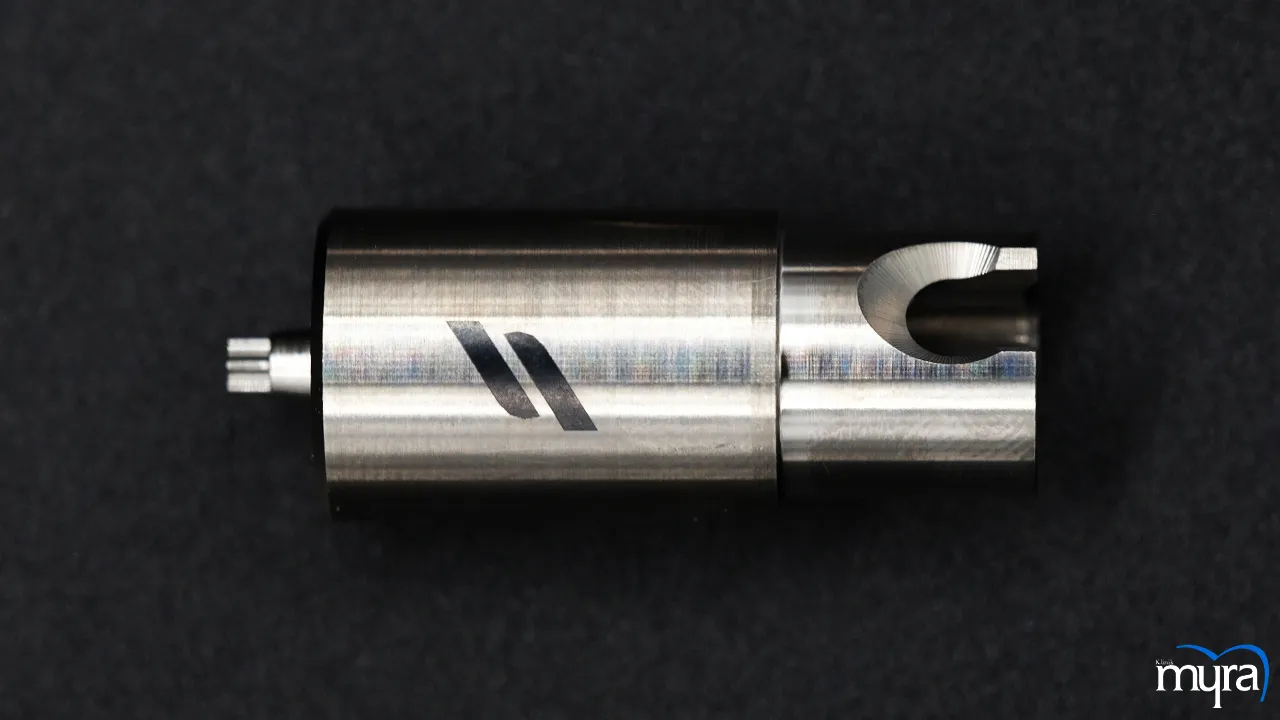
The risks of prefabricated abutments are listed below.
- Limited Customisation: Prefabricated abutments have predetermined sizes and shapes that do not quite match each patient's particular anatomical features. The restriction has an impact on the restoration's ultimate appearance and functionality.
- Soft Tissue Complications: Prefabricated abutments do not always offer the best emergence profile or soft tissue shape. It makes it difficult to achieve the best aesthetics, especially in situations when the gingival tissues are weak or lacking.
- Limited Angulation Options: The angulation possibilities for prefabricated abutments are restricted. The prosthetic alignment with a prefabricated abutment is challenging if the implant fixture is positioned at an unusual angle, which affects function or aesthetics.
- Incompatibility with Special Cases: Some complex cases or circumstances with specific anatomical considerations necessitate custom abutments for the greatest fit and results. Prefabricated abutments are not appropriate; hence a unique solution is required for certain situations.
- Risk of Fracture: Prefabricated abutments are frequently composed of sturdy materials, including titanium or zirconia, but there is a chance that they fracture or experience mechanical failure over time. The risk is reduced by choosing high-quality abutments from reliable producers.
- Limited Prosthetic Alternatives: The prosthetic alternatives that are available for prefabricated abutments are restricted. Custom abutments are necessary to meet the unique needs of some sophisticated or advanced restorations, such as full-arch implant-supported dentures or implant-supported bridges.
- Implant-Abutment Mismatch: There are situations in which the selected implant and prefabricated abutment are not a perfect fit, even though prefabricated abutments are made to work with a variety of implant systems. The stability, fit, and long-term success of the restoration are impacted by the situation.
Are Prefabricated Abutments Painful?
No, prefabricated abutments are not painful. The installation of a prefabricated abutment is normally carried out while the patient is under local anaesthetic, which guarantees that they do not feel any pain. Local anaesthetic makes the procedure comfortable and painless by numbing the tissues that surround the area of operation. The actual implantation of the abutment is a simple, rapid process that typically causes no discomfort.
It is crucial to remember that some patients feel some mild discomfort or sensitivity in the days after the abutment has been inserted. It is a typical occurrence during the healing process and is treated with over-the-counter painkillers, as the dentist has said. Any soreness is fleeting and goes away as the tissues recover and acclimate to the abutment.
Does Prefabricated Abutments Affect Chewing Function?
No, prefabricated abutments do not affect chewing function. A prefabricated abutment’s main function during a dental implant operation is to join the implant fixture to the prosthetic crown or denture, giving the replacement tooth or teeth stability and support. The abutment itself does not directly influence the chewing process.
The shape and fit of the prosthetic restoration, such as a crown or denture, that is fastened to the abutment essentially dictate the chewing function. The main elements that affect the patient's capacity to chew and bite successfully are the calibre and accuracy of the prosthetic repair, together with the right alignment and occlusion or bite.
How Are Prefabricated Abutments Made?
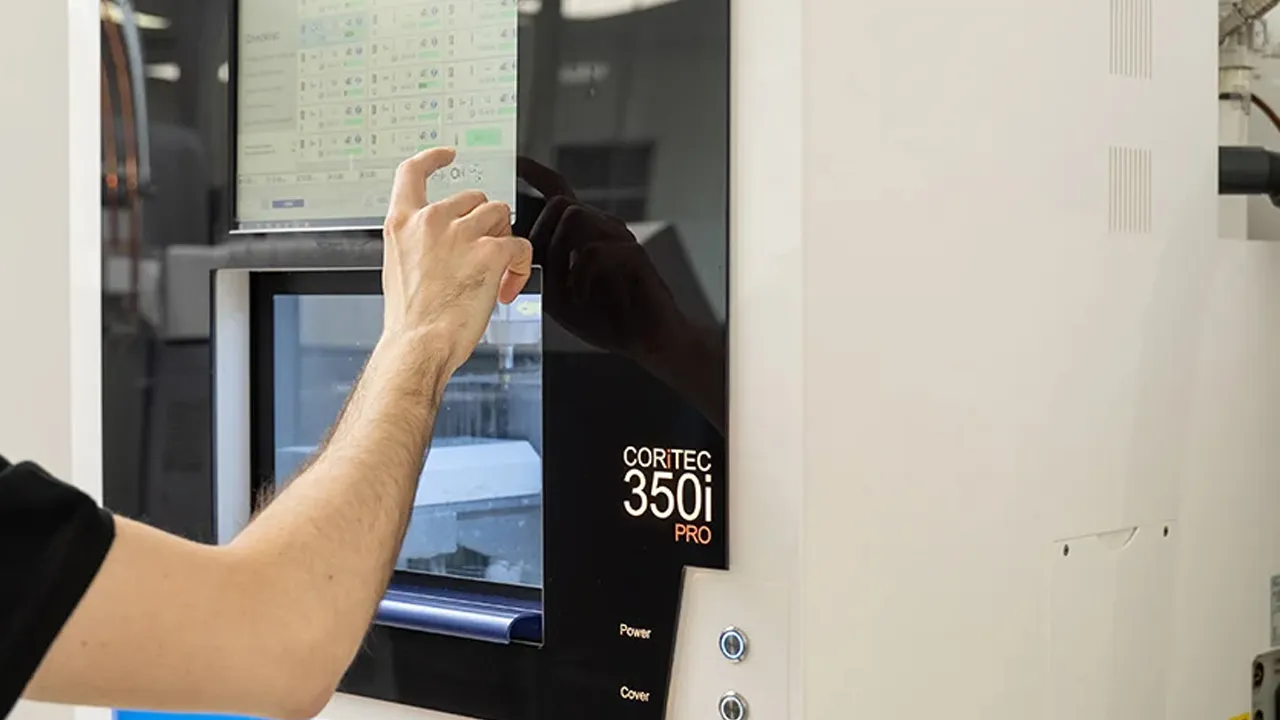
The steps on how prefabricated abutments are made are listed below.
- Designing. The prefabricated abutments’ requirements are created during the design process. The size, emergence, profile, and other crucial criteria must be determined based on the intended application and compatibility with different implant systems.
- Material Selection. The biocompatibility, strength, and durability of the chosen material,, such as titanium or zirconia, are taken into consideration. The material is normally obtained from reliable vendors specialising in creating high-quality dental products.
- Milling or Machining. Computer-aided design and computer-aided manufacturing (CAD/CAM) technology is frequently used in the manufacturing process in the case of titanium abutments. The milling or machining technique, which involves accurately shaping and milling a block of titanium to generate the abutment's form, is guided by the design specifications.
- Surface Treatment. The titanium abutments get surface treatments after milling or machining to improve their biocompatibility and encourage osseointegration, which is the fusing of the implant with the surrounding bone. The abutments get treatments including sandblasting, acid etching, or coating with bioactive materials.
- Quality Control. Prefabricated abutments must pass stringent quality control procedures to ensure that they correspond to the design guidelines and regulations. Inspections for dimensional correctness, surface quality, and suitability for different implant systems are part of the process.
- Packaging. Each abutment is separately wrapped and tagged with pertinent information, such as the abutment type, specifications, and compatibility information following quality assurance. The process promotes easy identification and selection by dental experts and provides traceability.
How to Design a Prefabricated Abutment?
The steps on how to design a prefabricated abutment are listed below.
- Understanding Patient Demands. The first step in designing a prefabricated abutment is to understand the specific needs of the patient. It includes evaluating the implant position, angulation, soft tissue contours, and the desired final restoration.
- Selection of Abutment Type. Select the suitable abutment type based on the clinical situation. It takes different forms, such as multi-unit abutments, angled abutments, or straight abutments.
- Abutment Material Selection. Consider the alternatives for the material of the abutment while choosing one. Zirconia or titanium are two common materials, each with advantages and factors to be taken into account, such as biocompatibility, strength, aesthetics, and durability.
- Abutment Dimensions. Determine the dimensions of the abutment, including the diameter and height. The dimensions must be compatible with the implant fixture to ensure a proper fit and stability.
- Designing an Emergence Profile. Take into account the end restoration’s desired emergence profile. It is vital to duplicate the curves and alignment in the abutment design to achieve a natural-looking emergence of the prosthesis.
- Contouring and Surface Texture. Design the abutment with appropriate contours and surface texture to support the surrounding soft tissues and facilitate optimal aesthetic integration.
- Compatibility with Prosthesis. Ensure that the designed abutment is compatible with the planned final prosthesis. It includes factors such as prosthesis material, attachment mechanisms, and occlusal considerations.
- CAD/CAM or Manufacturing Process. Utilise computer-aided design (CAD) and computer-aided manufacturing (CAM) technologies to create a digital design of the abutment. The design is then used to produce the prefabricated abutment through milling or other manufacturing processes.
What is the Durability of Prefabricated Abutments?
Prefabricated abutments are very durable dental instruments, especially when made with strong materials. Prefabricated abutments are constructed with certain classes of enduring materials, such as gold and titanium, to withstand stress brought about by chewing and other oral activities.
The manufacturers of prefabricated abutments are aware of their purpose, which enables them to produce reliable products. They are stable and safe to use. Patients must be confident of their prefabricated abutments, as they are designed to not break immediately with just a simple chew or bite.
Many factors influence the durability of prefabricated abutments. The selection of material for the prefabricated abutment affects its durability. Titanium abutments are commonly used due to their excellent mechanical properties, corrosion resistance, and proven long-term success. Zirconia abutments, known for their superior aesthetics, provide durability comparable to titanium abutments.
The design and manufacturing processes of prefabricated abutments play a crucial role in their durability. Precise machining and quality control during production ensure that the abutments have accurate dimensions and a robust structure, which contributes to their long-term stability.
The occlusal forces exerted on the implant-supported restoration affects the durability of the abutment. Proper occlusal adjustment and a balanced occlusion help distribute forces evenly, reducing the risk of excessive stress on the abutment and implant components.
Maintaining good oral hygiene and regular professional dental care is essential for the long-term durability of prefabricated abutments. Adequate plaque control and routine maintenance visits help prevent peri-implant diseases and ensure the health of the tissues surrounding the area, which indirectly impact the abutment's longevity.
What is the importance of Prefabricated Abutments maintenance?
The importance of prefabricated abutment maintenance is seen in its capacity to promote the long-term success and durability of dental implant restorations. Regular maintenance of prefabricated abutments helps prevent complications, ensures oral hygiene, detects issues early, and promotes optimal function and aesthetics of the implant restoration. It allows for professional assessment, cleaning, and adjustments to maintain the health and integrity of the abutments and surrounding tissues.
Proper maintenance significantly influences the lifespan of prefabricated abutments. Regular check-ups and professional cleanings prevent peri-implant diseases, such as peri-implant mucositis and peri-implantitis, which lead to implant failure. Maintenance helps extend the lifespan of the abutments and the overall implant restoration by addressing any potential issues early on.
Prefabricated abutments' lifespan varies based on several variables, such as the patient's oral hygiene routines, occlusal stresses, general oral health, and adherence to maintenance guidelines. Prefabricated abutments survive for many years, frequently between 10 and 15 years or even longer, with regular maintenance and adherence to good dental hygiene.
The frequency of maintenance visits for prefabricated abutments depends on the individual patient's needs and the recommendations of the dental professional. It is advisable to have regular check-ups and professional cleanings every six months. Some patients require more frequent maintenance visits, particularly patients with a history of peri-implant diseases or other risk factors.
Do improper maintenance of Prefabricated Abutments dangerous?
Yes, improper maintenance of prefabricated abutments is dangerous. Improper maintenance of prefabricated abutments poses risks to oral health and the long-term stability of dental implants. Neglecting proper care leads to the accumulation of plaque and bacteria, resulting in peri-implant mucositis and potentially progressing to peri-implantitis. The inflammation compromises the health of the surrounding tissues and the stability of the implant. Regular cleaning and maintenance of the abutments are vital to prevent bacterial biofilm formation and maintain peri-implant tissue health.
Neglecting maintenance contributes to abutment screw loosening or degradation of the abutment-implant connection, jeopardising the stability and longevity of the implant-supported restoration. Aesthetic concerns, such as discolouration or staining of the abutments, arise from improper maintenance.
Patients must practice diligent oral hygiene, attend regular dental visits for professional cleanings, and receive proper education on cleaning techniques specific to their implant restoration to mitigate the risks. Regular follow-up appointments are crucial for monitoring the abutment's condition, peri-implant tissues, and overall restoration function. Emphasising proper maintenance and regular dental care is essential to ensure the long-term success and health of implant-supported restorations.
How Much Do Prefabricated Abutments Cost?
Prefabricated abutments cost around £150 to £500 per unit. The cost of prefabricated abutments varies depending on factors such as the specific manufacturer, material, design complexity, and the dental clinic or laboratory one chooses. Titanium abutments are generally less expensive compared to zirconia abutments, as zirconia is a higher-cost material.
The cost of the abutment is typically separate from other components of the dental implant treatment, such as the implant fixture, final prosthesis, dental laboratory fees, and any associated surgical or restorative procedures. The additional costs must be taken into account when considering the expenses of dental implant treatment.
How are Prefabricated Abutments Compared to Other Restorative Dental Treatment Implant Options?
Prefabricated abutments differ from other restorative dental treatment implant options in many ways. Prefabricated abutments are classified as the pre-manufactured component used in dental implant treatment that serves as a connector between the implant fixture and the final prosthesis, such as a crown, bridge, or denture.
Prefabricated abutments are designed to provide stability, support, and proper alignment for prosthetic restoration. They are abutments that are manufactured with specific dimensions, angles, and emergence profiles to accommodate different implant systems and clinical situations. The standardised design of prefabricated abutments ensures consistent and predictable outcomes in terms of fit and functionality.
Custom abutments are individually designed and fabricated for each patient's specific implant case. Custom abutments offer greater customisation and are tailored to match the patient's unique anatomical needs, emergence profile, and desired aesthetics, unlike prefabricated abutments. Custom abutments are often preferred in complex cases or when achieving optimal aesthetics is a priority. They are more time-consuming and expensive compared to prefabricated abutments.
Stock abutments are similar to prefabricated abutments but typically have fewer options in terms of design and customisation. They are pre-made abutments that come in various sizes and shapes but do not provide the same level of anatomical precision or customisation as custom abutments. Stock abutments are generally more cost-effective and readily available but do not offer the same level of aesthetics or optimal fit as prefabricated or custom abutments.
Screw-retained restorations are used in dental treatment implants, which involve attaching the prosthesis directly to the implant fixture with a screw, eliminating the need for a separate abutment. It is an option that offers advantages such as retrievability for maintenance and ease of repair. Screw-retained restorations for dental treatment implants require more space for the screw access hole, and is challenging to achieve optimal aesthetics in certain cases.
Removable dentures supported by implants are an alternative to individual implant-supported restorations for patients with multiple missing teeth or extensive edentulism. Removable dentures provide stability, function, and improved aesthetics compared to conventional removable dentures. They require regular removal for cleaning, have decreased chewing efficiency compared to fixed restorations, and do not offer the same level of comfort and natural feel.
What Are the Expected Developments in the Field of Prefabricated Abutments in the Future?
There are a lot of expected developments in the field of prefabricated abutments in the future, including enhanced aesthetics. Future research concentrates on enhancing the prefabricated abutments' aesthetic results. It entails the development of materials and technology that enable restorations that are even more realistic and natural-looking.
Prefabricated abutments provide standardised possibilities, but there is a tendency toward increasing customisation and personalisation. The development of prefabricated abutments customised to the unique requirements of individual patients is made attainable by developments in CAD/CAM technologies and digital dentistry.
The use of biocompatible and bioactive materials for prefabricated abutments are not yet explored and improved upon through research and development. The substances improve soft tissue reaction, osseointegration, and the long-term durability of implant restoration.
New advancements are made to improve efficiency and expedite the process of installing and restoring prefabricated abutments. It entails improvements to chairside scanning and virtual planning tools in digital dental processes to speed up the healing process.
Enhancing the lifetime and durability of prefabricated abutments is the focus of future research and technological developments. It means enhancements in material qualities, surface treatments, and production procedures to ensure optimum performance and lifespan over a lengthy period.
What are the Differences Between Prefabricated Abutments and Custom-Made Abutments?
The differences between prefabricated abutments and custom-made abutments are seen in their structures, prices, complexity, and compatibility, among others.
Prefabricated abutments are already in stock and are produced with standardised designs and dimensions. Prefabricated abutments provide comfort, a shorter course of treatment, and cost efficiency. Custom-made abutments are made from patient-specific specifications. Custom-made abutments offer customisation to meet the patient's anatomy, implant position, angulation, and emergence profile.
A custom abutment's manufacturing takes more time and money. Prefabricated abutments are compatible with only certain implant systems, while custom abutments are made to accommodate a variety of implant designs and connections. Custom-made abutments provide greater flexibility in creating the best aesthetics because they closely resemble the curves of real teeth and the profiles of the gingival tissues.
Prefabricated abutments work well in simple circumstances, but custom-made abutments are recommended in complicated anatomical scenarios or cases where aesthetics are a concern. Prefabricated abutments allow for easier inventory management, but abutments that are built to order demand careful planning and communication with the dental laboratory. Prefabricated abutments or custom made abutments must be selected in consultation with a dental practitioner based on the intricacy of the patient's condition, any clinical requirements, and aesthetic considerations.






